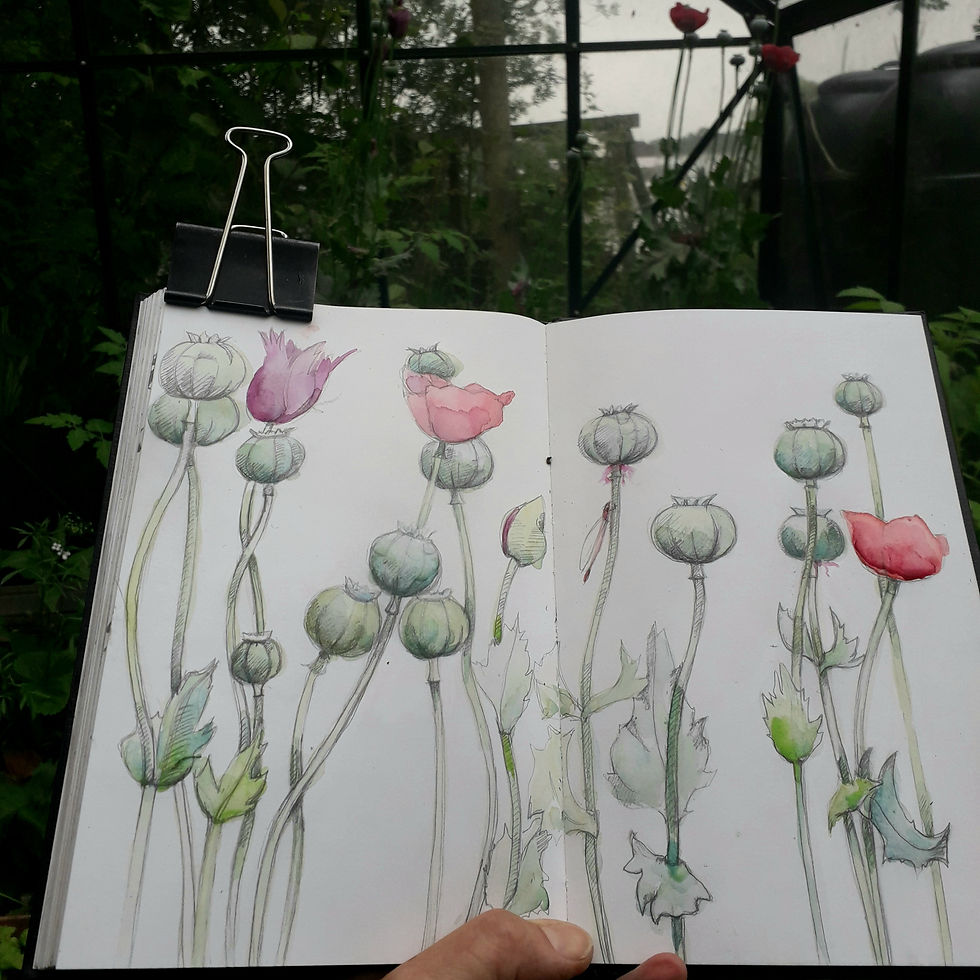Discovering the Woodcock
- Painter and Printmaker
- Jan 26, 2020
- 3 min read
Updated: May 24, 2022

My sketches and early drawing of my Woodcock print
Early in December, on a cold and dreary afternoon, I left my studio to retreat to the warmth of the house for a few minutes to clean up my printmaking tools. On my return, I suddenly stopped at my door. There, on the ground, lay the remains of a woodcock.
I can't have been gone more than five minutes and yet there it rested at my feet, completely stripped bare, but with its head and beautiful wings completely intact. I was overwhelmed by sadness at the poor creature's demise, yet bewildered as to how it had got there without any sign of the culprit who had caused this awful thing. There are no foxes here and wondered whether it had been caught by a feral tomcat that is sometimes seen about the garden. Whoever had done this, had certainly been very hungry.
Woodcocks are in sharp decline in this country. Their numbers have fallen 56% since the 1970's and are now on the Red List and classified as of concern. I had had no idea that this extraordinary little bird was in my garden, but that is unsurprising, as their mottled plumage provides the perfect camouflage amid the leaf litter and rusty bracken fronds. I may have walked past it and never have spotted it. It is certainly rare to see one in woodland. They are mostly crepuscular in habit and during the day sit motionless , almost invisible among the fallen leaves. Certainly the garden was the ideal habitat for the Woodcock. The ground is soft and covered with leaf mould at the edges, ideal for its long prodding beak to pull out earthworms and fish out snails and slugs. But they must have water nearby to clean their beaks after feeding and so the mere's edge was perfect for this.

Tracing my drawing onto the lino
But sadly the Woodcock is considered to be a rather foolish bird. Often, when threatened, it won't fly but will scuttle among the undergrowth, making it it easy prey for predators and trappers. In Love's Labour's Lost Berowne describes himself and his friends as 'four woodcocks in a dish', after discovering they have all fallen in love when they had declared they would not. And in 1678, in his book Ornithology, Willoughby says that the bird is "infamous for its stupidity or folly", and so the Woodcock has developed the reputation as slow witted.

And yet these birds are much loved and I am not alone in my devotion to them following an encounter. They are so distinctive, their dark expressive eyes, perched high on their head, make them so endearing. Although not brightly in colour, their cryptic plumage is so exquisitely marked and varied, the feathers are cinnamon and chestnut, buff and gunmetal and I spent hours with the feathers laid out in front of me working out how to interpret their design in black and white.

The creation of this print was a very happy process. I loved reading of their behaviour and folklore, studying closely how others artists had depicted them. I particularly loved Thomas Berwick (1753-1828) engraving which captures their furtiveness and vulnerability (illustrated above.) I wanted to create something to celebrate the bird's beauty and unique character and charm, though my encounter had been so very poignant. The little bird now lies in my flower bed with snowdrops flowering above him. He certainly won't be forgotten.

The completed carved Woodcock ready for printing

Printing my edition of linoprints on my converted mangle press in my studio




Comments